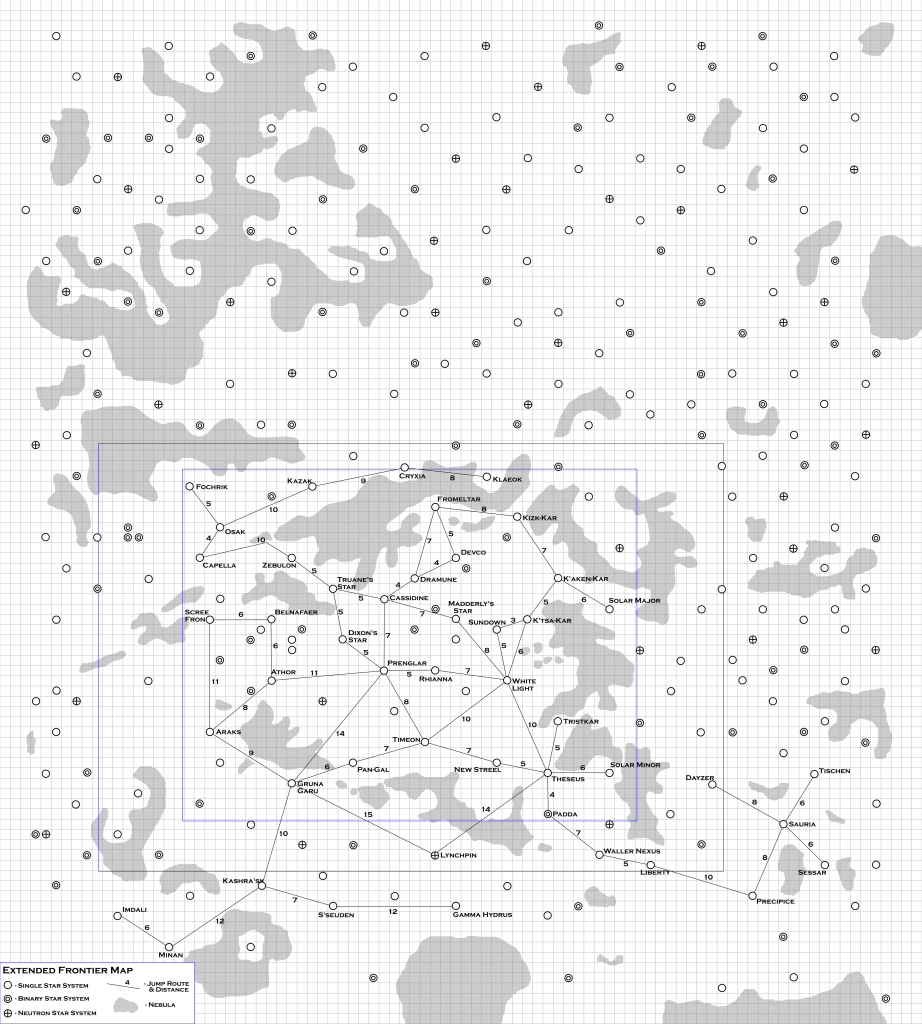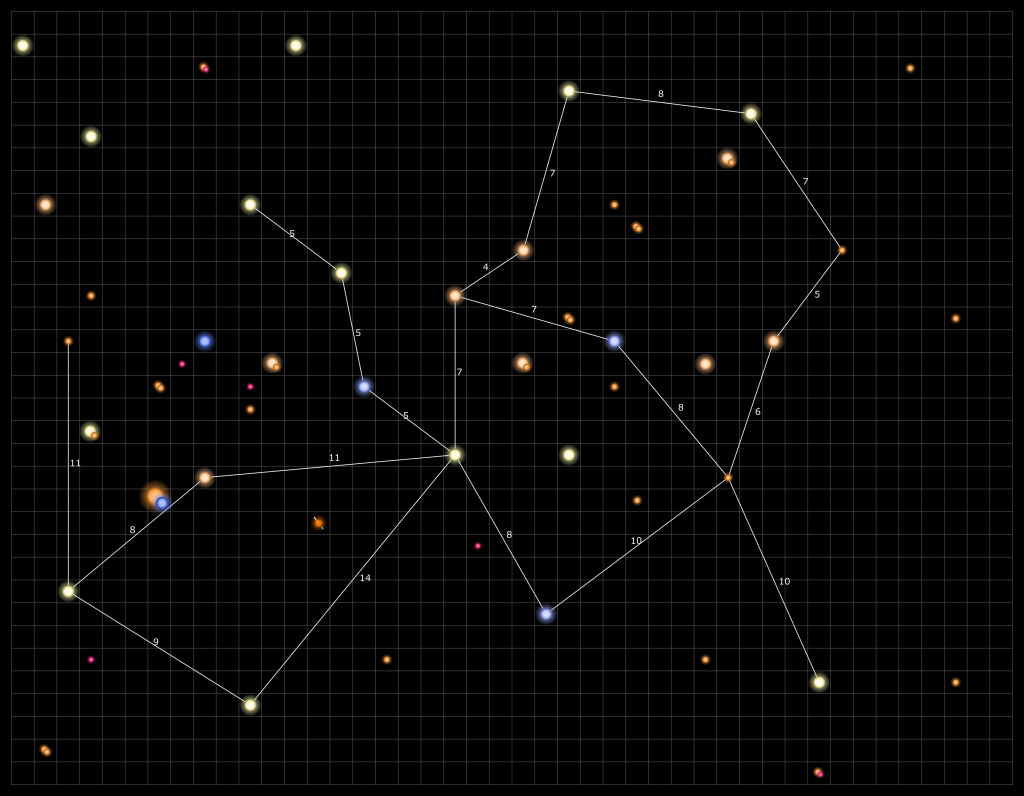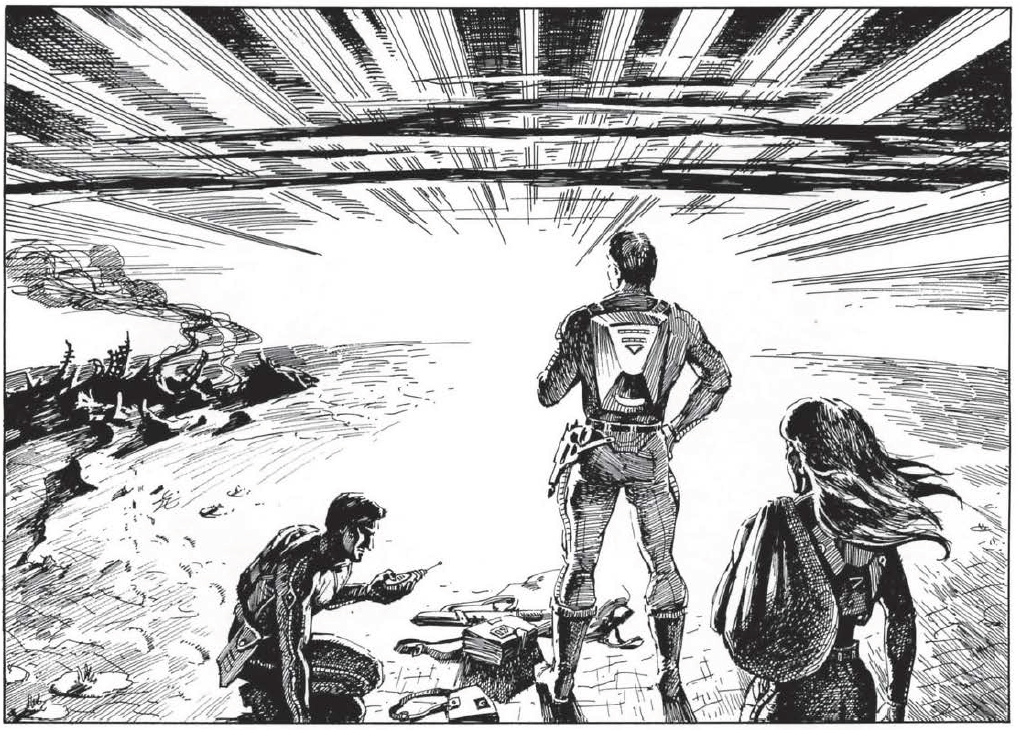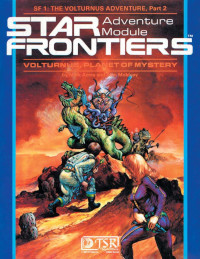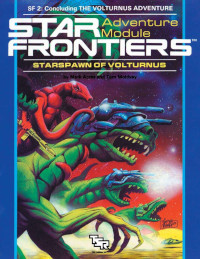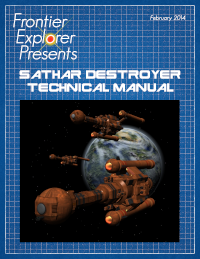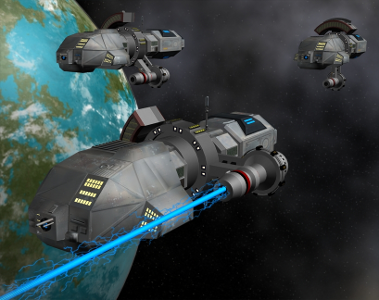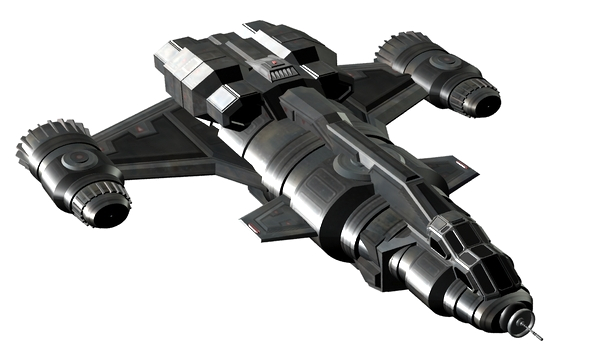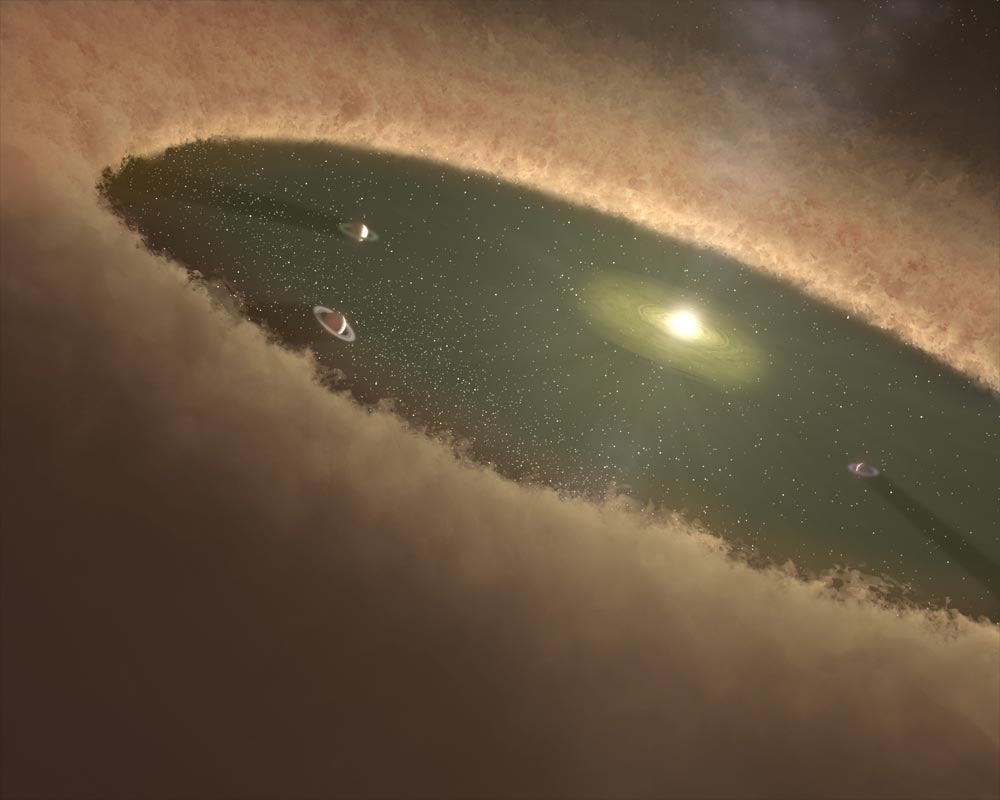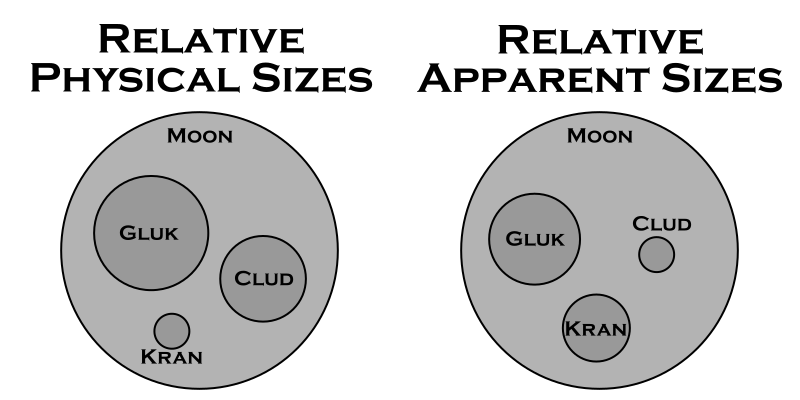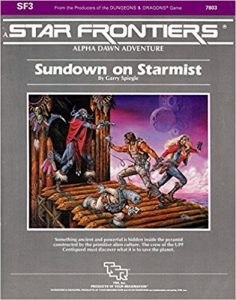
Having survived Volturnus, it’s time for the PCs to attempt first contact with the Heliopes on Starmist. Originally, I had planned to cover the remaining 3 Alpha Dawn modules in this post but in reviewing Sundown on Starmist, I realized I had a lot to say about this module alone. So it gets its own post.
Issues
I started to write up this module like the Volturnus ones, but the more I looked at this module, the more concerns I had with it. Playing it in the 80’s as a teenager when it first came out, I didn’t think much about it. You need to rescue your employer who had been kidnapped, you found a cool super tank, and you got to blow things up. It’s no fun to lose the tank in the end but I understand that for play balance reasons. Give the PCs a fun toy to allow them to take on harder challenges but take it away so it doesn’t unbalance the game.
But looking at it with older eyes, you see the other side of the adventure. As part of the adventure, the PCs transgress the social structure of a primitive society, violate and destroy their temple, and eventually completely destroy an artifact central to the religion of that culture. Granted, the other option is complete annihilation of the species (and the PCs) but it’s still not the best story-line for success. Especially after just leaving Volturnus where they actually worked to build up and sustain the native cultures.
Now if you’re players don’t care about those issues, you can play it as written. Or if you want to give them a morally hard situation and choice, maybe it is still okay. But if you want to avoid that kind of situation in your campaign, you might consider skipping it. Looking at the pregenerated characters, the PCs are going to be a bit overpowered coming into this adventure if they just finished the Volturnus series. So skipping it won’t hurt them for future adventures. And their higher levels might give them some options for other paths through the adventure that don’t require the tank.
In any case, we’ll proceed assuming you do want to include the adventure, so let’s get to looking at it in a bit of detail.
Sundown on Starmist
Location, Location, Location
First of all, we need to figure out where this planet and system is located. If you look at the beautiful map in the Zebulon’s Guide to Frontier Space, the artist placed Sundown way on the left side of the map by Araks and Scree Fron. Based on the information in the module itself, this location doesn’t really make any sense to me and since Zeb’s Guide has other issues, I’m going to not use this location for the system.
Now, I thought that the module itself gave an approximate location for the system, but it turns out that if it does, I can’t seem to find it any more. All the other modules do give locations for their systems, so that’s probably why I thought this one did as well. In any case, there are clues as to the location of the system in the text of the module that we’ll look at to divine its location.
The module says that Sundown was discovered when a ship that Maximillian was serving on was forced to make an emergency landing on the planet Starmist. That doesn’t exactly jive with the Knight Hawks rules (And since the module specifically references the Knight Hawks rules, we know they were out when it was published.) but if we take it to mean that the ship misjumped into the system, then we know that it is somewhere near where that ship was traveling.
Looking at Maximillian’s background, he was born in a vrusk enclave in Valentia City, which is on Clarion in the White Light system. And he went to school on Ken’zah Kit in the K’aken-Kar system. His ship, the VSS Last Legs, is registered in that same system and he purchased and refitted the ship right after returning from Sundown the first time. Since he grew up and worked in this part of the Frontier, near the vrusk inhabited worlds, and was in this sector when he returned from the Sundown system. It makes sense that the system is somewhere nearby.
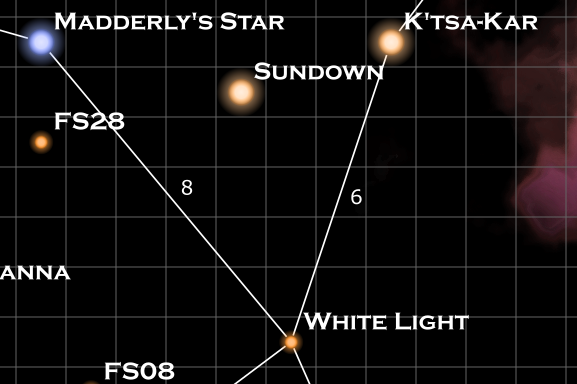
To that end, I’ve chosen Sundown to be the star in the triangular region formed by Madderly’s Star, K’sta-Kar, and White Light. You can see this location represented on the Expanded Frontier Map.
Starting the Adventure
Getting the PCs on this adventure is a bit of a trick. They are either in Truane’s Star, or if you had them go testify at the Council of Worlds, they are in the Prenglar system. Neither of which is over in the part of the Frontier where you really want them.
Prenglar is easier. In that case you could just declare that Maximillian was having his ship refit in the starship construction center there and is looking for a crew. He can recruit them at some point after their testimony.
If they are in the Truane’s Star system still, you need to come up with a reason to get them to the other side of the Frontier. Maybe they are invited to talk about their experiences on Volturnus at the University of Clarion, all expenses paid. Or maybe the Pale government gives them a lead and offers transport to chase down someone who works with he Star Devil that skipped town. Or some other small adventure that appeals to the players’ interests that get them across the Frontier. Once they are on Prenglar or Clarion, they can be approached by Maximillian.
Regardless of where he approaches them, he’s heard of their exploits and is seeking them out specifically because of their experience working with native primitive cultures and he wants assistance dealing with the Heliopes.
Running the Adventure
Once they have signed on, they are off to Starmist. The trip there should be fairly boring so it can pass by as quickly as you’d like. It’s a chance to get to know their employer and decided what equipment they might need/want for the trip. They should have quite a bit a cash from the Volturnus adventure so let them spend it.
The adventure itself is fairly straightforward: Head to the village, poke around to try to find the sources of the metal, learning along the way some of the history and seeing the strange artifacts, rescuing Maximillian, fighting off the sathar robots, discovering the tank, and assaulting the sathar base.
Skimming through the adventure, a few things stood out to me.
- Maximillian has plot armor, at least until the tank is discovered. I thought it was funny how in the very first encounter, the module tells the referee to adjust die rolls as needed to keep him alive.
- The adventure is always pushing the PCs to find and explore the tank. As I said before, this is a possibly morally questionable action and the players may not be comfortable with it. I’d say if the players want to pursue that, let them but if they don’t show interest in the tank, don’t push it as hard as the module is written. More on this below.
- Getting into the bunker is somewhat of a railroad. The text says that the only way in is through the elevator and specifically tries to shut down alternate ways in.
- There are some inconsistencies in the times specified for the various self-destruct sequences in the bunker. But there is also a lot of flexibility depending on what you want to do with the approaching sathar ship (if anything) so you can really do whatever seems best as you’re playing
Not using the Tank
I’ve already talked a bit about the issues with uncovering and taking the tank from the village. That said, it’s not really needed to finish the adventure. The PC’s already have an explorer that they can use to follow the sathar robots. And approaching the sathar base on foot actually gives them a better chance of getting in undetected. So in the end, the tank is cool, but doesn’t seem to be as necessary as the module writers seem to be implying by pushing the PCs toward it. If they don’t want to take it, they can still successfully complete the adventure. Especially since they will probably be at a bit higher levels than the pre-gens for the adventure.
Experience Points
Interestingly, this module gives no guidance on awarding experience points. They don’t seem to be mentioned anywhere, even in the introduction. I’d award XP at the following points:
- Making it to the village on friendly terms – 3 XP
- Rescuing Maximillian with minimal loss of Heliope life – 3 XP
- Driving off both waves of sathar robots with minimal loss of Heliope life – 3 XP
- Clearing the bunker – 3 XP
- If they make it to the bunker without losing a vehicle (war tank or explorer) – 1 bonus XP
- Not taking the War Tank – 1 bonus XP
Beyond the Module
Extra adventures
The module gives the option of the PCs dealing with the incoming sathar heavy cruiser and using the rocket launcher at the base to damage or destroy it. It also gives the suggestion of the ship sending down landing parties that the PCs have to deal with. Personally, I’d probably omit this aspect, especially since I have a different view of the construct of the sathar ships. At most, I’d make it a destroyer. That still gives over 500 sathar ground troops that they’d have to deal with and that’s a bit much for a single PC party.
However, if you do want to use those optional adventures, I’d award 3-6 more XP for the subsequent adventures.
There are few other things you could do on Starmist but they would require convincing Maximillian that they should stay on the planet longer.
The background says that Heliopes are spread out in 200 tribes over 5 different rifts. If you wanted to extend the adventure further, you could develop these other tribes, and allow the PCs to seek them out and interact with them. Remember that the village Heliopes are the most culturally developed.
Another option is to collect sathar bio-constructs. These would be of great interest to the UPF and to various private corporations. There are a lot of them here on Starmist and the PCs could go on a hunt to try to collect various live specimens. This should definitely be worth a financial reward (shared with Maximillian) and possibly an XP reward as well.
Aftermath
Depending on the way they handled themselves, the PCs may or may not be on friendly terms with the Heliopes. If the village was seriously destroyed and the war tank stolen, they might not be welcome at all and be run off by a mob and have to flee to their ship. Or they might be welcomed warmly if they helped to save the village and didn’t disturb the tank.
There might also be repercussions back in the Frontier. The UPF will eventually send a delegation to the planet and will discover how the PCs interacted with the natives. This could either enhance or detract from their reputation and if they treated the Heliopes poorly, they might be called before a UPF tribunal for their conduct.
Moving on
Next up is SFAD5: Bugs in the System. We’ll look at that and the following modules in the next installment. What are your thoughts on Sundown on Starmist?
